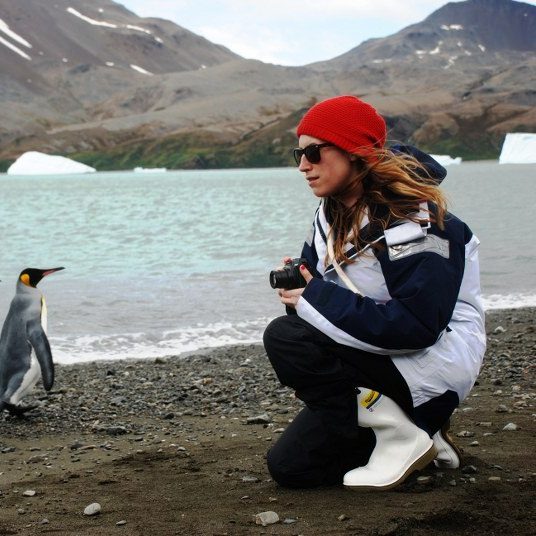
Technologies are being developed, but widespread implementation isn’t as easy as it sounds. Right now, neither electric planes nor new fuels offer a viable solution for clean air travel.


Technologies are being developed, but widespread implementation isn’t as easy as it sounds. Right now, neither electric planes nor new fuels offer a viable solution for clean air travel.
Aviation single-handedly accounts for two percent of global carbon emissions, mostly due to the kerosene-based jet fuel that is currently the cost-effective, and highly polluting, industry standard.
Since it is so carbon-intensive, some climate activists have advocated against air travel as part of a larger push to reduce greenhouse gas emissions and slow global warming. Youth climate strikes activist Greta Thunberg made headlines in 2019 for sailing across the Atlantic for summits instead of flying, and groups like Extinction Rebellion have held direct actions protesting air travel.
So, what will it take to make air travel that emits fewer greenhouse gasses possible? Right now, there are a couple of different possible technologies, both of which are promising but not exactly on the cusp of widespread use.
The first is all-electric planes, which saw its first small passenger model take a successful test flight last fall. However, there hasn’t been much news regarding electric passenger flights since then. The biggest limiting factor with electric planes is battery capacity—right now, the planes can only take a few people at most a couple hundred miles—and the biggest hurdle to their widespread commercial use is that it would require phasing out the existing fleet.
The second option is sustainable aviation fuel which could, ideally, be used by existing airplanes and emit fewer greenhouse gasses. At least, that’s the idea. One study of four alternative aviation fuels by researchers in the UK concluded that none would be able to replace fossil fuels in the near term. Biofuels would require a massive portion of arable land, and options like hydrogen would require significantly more renewable energy than the UK currently produces.
It’s worth noting that year over year, new airplane models are using less fuel. But the challenge with incremental improvements to emissions—like making a fuel that releases, say, 10 percent less carbon, or a plane that requires 15 percent less—is that demand for air travel is still growing, and quickly. Any gains are quickly offset by increased use. According to the International Energy Agency, new aircraft models are up to 20 percent more efficient than the older planes they’re replacing. But aviation emissions still keep increasing every year because additional flights make up the difference.
You don’t have to know much about decarbonization or the airline industry for the combination of ‘sustainable’ and ‘air travel’ to set off some greenwashing and oxymoron alarms. But that’s not to say that a combination of less-polluting technologies, thoughtful and limited expansion (Amsterdam’s Schiphol airport, for example, capped the number of flights allowed in and out each year), and curbing demand couldn’t ultimately lead to fewer aviation emissions.
The rapidly closing window to make a significant dent in overall warming over the next century means that meaningful reductions in the short term will still likely require people to eliminate plane trips, or replace them with other modes of transportation. Short flights between destinations can easily be traveled by trains, for example. This kind of shift is one that some countries are already trying to make mandatory.
Cleaner fuel technologies and electric planes both hold the potential to be genuine, if only partial, alternatives in the coming decades. But a wholesale transition from fossil fuel-powered aircraft to ones that don’t emit fossil fuels is pretty unlikely at this point, which means that air travel as we know it just isn’t a sustainable option. But knowing this doesn’t need to spiral into flight-shame and a goal to only partake in the no-fly travel movement.
There are ways to reduce your impact as a flyer, like choosing to fly direct whenever possible. According to reporting by columnist Brooke Nolan, flying direct slightly reduces our impact because taking off and landing generate more emissions than cruising at altitude. Additionally, flying on twin-engine aircraft such as Boeing’s 787 Dreamliner or the Airbus A350 is more fuel-efficient than four-engine airplanes and packing light can make an overall difference in the amount of fuel used during a flight.
***
Adventure.com strives to be a low-emissions publication, and we are working to reduce our carbon emissions where possible. Emissions generated by the movements of our staff and contributors are carbon offset through our parent company, Intrepid. You can visit our sustainability page and read our Contributor Impact Guidelines for more information. While we take our commitment to people and planet seriously, we acknowledge that we still have plenty of work to do, and we welcome all feedback and suggestions from our readers. You can contact us anytime at hello@adventure.com. Please allow up to one week for a response.

Miyo McGinn is Adventure.com's US National Parks Correspondent and a freelance writer, fact-checker, and editor with bylines in Outside, Grist, and High Country News. When she's not on the road in her campervan, you can find her skiing, hiking, and swimming in the mountains and ocean near her home in Seattle, Washington.







Can't find what you're looking for? Try using these tags: